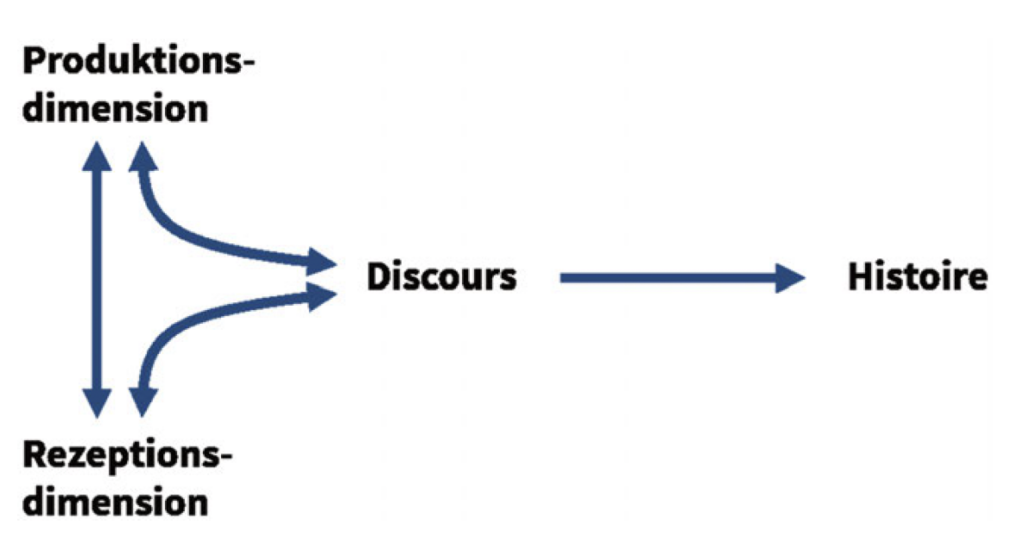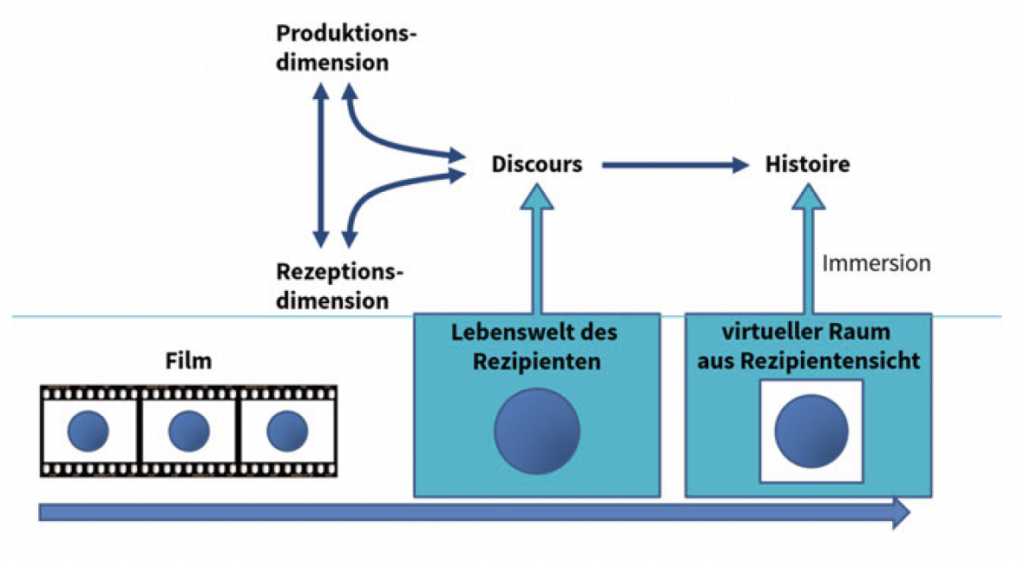Animation has often been neglected (or at least marginalised) in film theory and history. For example, the authors David Bordwell and Kirstin Thompson categorise in their publication Film Art: An Introduction documentaries, experimental and animated films as alternatives to the fictional, apparently mainstream and live-action film (vgl. Beckman, S.2-12). Another differentiator is animation’s definition as „expressive medium“, which in contrast to live-action film can reach from hyperrealism to experimental. Also the different animation techniques like cell- or flash animation, stop-motion animation, 3D animation and many more add to the animations overall aesthetic. These techniques can be then again separated into different styles. These various styles can be perceived differently. So I had a closer look of how people recognise and analyse materials in different way. This blog entry is based on Matthias C. Hänselmann’s article „Das Gemachte als Bewusst-Gemachtes – Produktive und rezeptive Dimensionen von Materialität und Materialtransparenz im Film“, which was published within „Ästhetik des Gemachten – Interdisziplinäre Beiträge zur Animations- und Comicforschung„.
Different ways of Perception
Most of the times we humans perceive man-made products as self-evident and do not question why it is the way it is. But every object communicates. That’s why Matthias C. Hänselmann takes a closer look in his essay „Das Gemachte als Bewusst-Gemachtes – Produktive und rezeptive Dimensionen von Materialität und Materialtransparenz im Film“ on the qualities of the conscious experience. He subdivides the conscious experience into two categories:
- The production process: It concerns the intention of the produced product. In more detail this aspect focuses on the awareness for the decisions which have been made in order to design the product in question. Intention, purpose, its production and the unique way of its appearance are key figures when analysing a product. In this regard the term man-made is applicable on the intentional manufacturing and also on the manufacturer. Therefore is the man-made product measured by its quality and every decision has a semiotic relevance at the end. Explicitly for animation it means that for the production there has to be a decision made with which technique to accomplish the resulting animation. Furthermore, this exclusive choice of technique has a significant character for the end product, since it makes a difference whether a particular topic is realized in traditional drawing or on the basis of computer generated 3D graphics. Depending on the chosen technique, stylistic peculiarities arise, which influence the overall significance of the film’s communication.
- The perceptibility of a media product: This approach focuses on the aspect of perceptibility of a certain material quality of a specific product. In this regard, the man-made as consciously made refers to the fact that the material condition of a media product is explicitly defined, experienced and perceptible and therefore particularly noticeable in terms of receptivity. Something is ‘conscious’ in this regard, because it is made noticeable, sensually perceptible. In this dimension, the focus is placed on a certain effect of what is created – in other words: the quality of the media product, which (partly) emphasises its artificiality, objectifies it noticeable within film communication and– at least theoretically – keeps it constantly awake in the consciousness of the recipient.
Especially the second aspect of the perceptibility of a media product has been theoretical discussed by many. The russian formalist Victor Šklovskij examined and compared in his essay „The theory of prose“ specific characteristics between artistic texts and aesthetically inefficient texts. Unlike Hänselmann, Šklovskij was of the opinion that art is method for the experience of a certain product, while the product itself is in regard to art irrelevant. His distinction amounts partly to what structuralist narratology later distinguished with the pair of concepts of discourse and history.
- Discourse is the (materialistic) surface dimensions of the particular product. For example in regard to film it reaches from each frame, the colourfulness, design techniques and production to the principles of sequencing and montage.
- History focuses on the chronological sequence of a specific narration. It is more about the storytelling and displayed plot than about how it is achieved. For Šklovskij history is irrelevant.
Hänselmann combines his defined production process and the perceptibility of a media product with the theory of discourse and history. The result is the following diagram. As shown are both aspects important to form a discourse and subsequently a history.

Material vision and immersion vision
Matthias C. Hänselmann introduces the model of the levels of consciousness of film perception by Anselm Kreuzer to demonstrate his model in regard to film. Kreuzer’s model originally focuses more on film music theory, but is according to Hänselmann also applicable on materials. In this model, Kreuzer distinguishes three levels of consciousness of film-perception, starting from a certain recipient who deals with a film. In doing so, he considers:
- the living environment of the recipients
- the virtual space conveyed by the film
- the depth dimension of consciousness

When viewers are fully absorbed in the virtual world of the film and captivated by the action depicted as if it were a real, current event, they primarily perceive the film in terms of its illusory history (history aspect of the model). The key characteristic of this type of reception is immersion. Initially associated primarily with the explanatory concepts of virtual reality, the term immersion is now used more broadly in various cultural sciences to describe states in which the recipient gradually merges imaginatively with the perceived work of art. A film achieves an immersive effect when the medium itself, as a means of mediation, becomes invisible to the audience and the specific medium or the material representation of the film is perceived as real. In relation to this aspect of film reception, one can also refer to it as immersive viewing. On the other hand, the more clearly and skillfully it can be concealed that the narrative is conveyed through a medium, the more easily and effectively immersion is achieved.
However, immersion is disrupted or even completely prevented when certain effects arise, revealing that what is been shown is in some way an illusion, a fabrication, mediated, or invented – in other words, „made“. These effects primarily occur at the level of discourse and are particularly noticeable when deliberate disruptions or intentional attention to materiality are built into the film. When such effects occur, they often overwhelm the history aspect and may even bring the audience back to their reality since counter-immersive effects always remind them that the film is merely a constructed material, something that has been „made“, and therefore an element of the real world. Hence, in relation to this aspect of film reception, one can also refer to it as material viewing, since the material qualities and factors of the film are predominantly perceived. But both, immersive viewing and material viewing accompany, complement and interact with each other. That is why the aesthetic component in the narrative process of a film can be used productively, informatively and communicatively.
Illusion of life principle
The illusion of life principle is coined by Disney and describes a concept in which the aesthetic of the animation should be as life-like as possible. Every aspect like the material’s intrinsic value disturbs the immersive experience which results in complete negligence. So the intrinsic value of materials is kept on a minimum. The three key aspects of the illusion of life principle are the following:
- a completely smooth, closed, opaque surface that shows no signs of manufacturing or manipulation (usually computer animations with optimal shading, but also classic Cel-animations with acrylic paints)
- a stringent, eventful and unbroken narrative with a (often single) central narrative line
- the renunciation or the deliberate avoidance of any media-reflective reference to the formal-material composition of the film
From the point of view from the discourse variable, material in this case is solely carrier and does not have any intrinsic value on its own. The main focus lays on the history variable. Hänselmann calls this state: Materialtransparenz.
Like language a viewer learns to read film. If a person is used to watch western animated films, for example, they will probably struggle at first while watching traditional Japanese anime. But as soon as they get used to the Japanese animation and develop a feeling and understanding for it, it turns automatic and will be seen as a given. The material of the representation is neutralised, therefore it descends to the level of the self-evident and is no longer seen as itself (it is transparent). That also indicates that the discourse looses its significance and the main focus is on the history – in brief: Medientransparenz occurs.
To break Materialtransparenz the film/ animation, the film can use tools in the form of self-referential or material-accentuating structures. This can be reached by alienation of the happening immersion or by accentuating the material itself. For example if you use a material which is unconventional or is highly contrasting the narrative and therefore is in the foreground while watching the animation, the material itself communicates and has a higher significance in the perception of the animation.
To conclude this blog entry I have to say, that I got a better theoretical understanding of the perception of material within an animation. For further understanding it would be ideal to use Hänselmann’s theory when it comes to analyse animations – especially it’s usage of material.
Used literature:
Backe, Hans-Joachim; Eckel, Julia; Feyersinger, Erwin; Sina, Véronique; Thon, Jan-Nöel (2018): Ästhetik des Gemachten – Interdisziplinäre Beiträge zur Animations- und Comicforschung. Berlin: De Gruyter Verlag.
Beckman, Karen (2014): Animating Film Theory. London: Duke University Press.
Hänselmann, Matthias C. (2018): Das Gemachte als Bewusst-Gemachtes – Produktive und rezeptive Dimensionen von Materialität und Materialtransparenz im Film. In: Ästhetik des Gemachten – Interdisziplinäre Beiträge zur Animations- und Comicforschung. Berlin: De Gruyter Verlag.